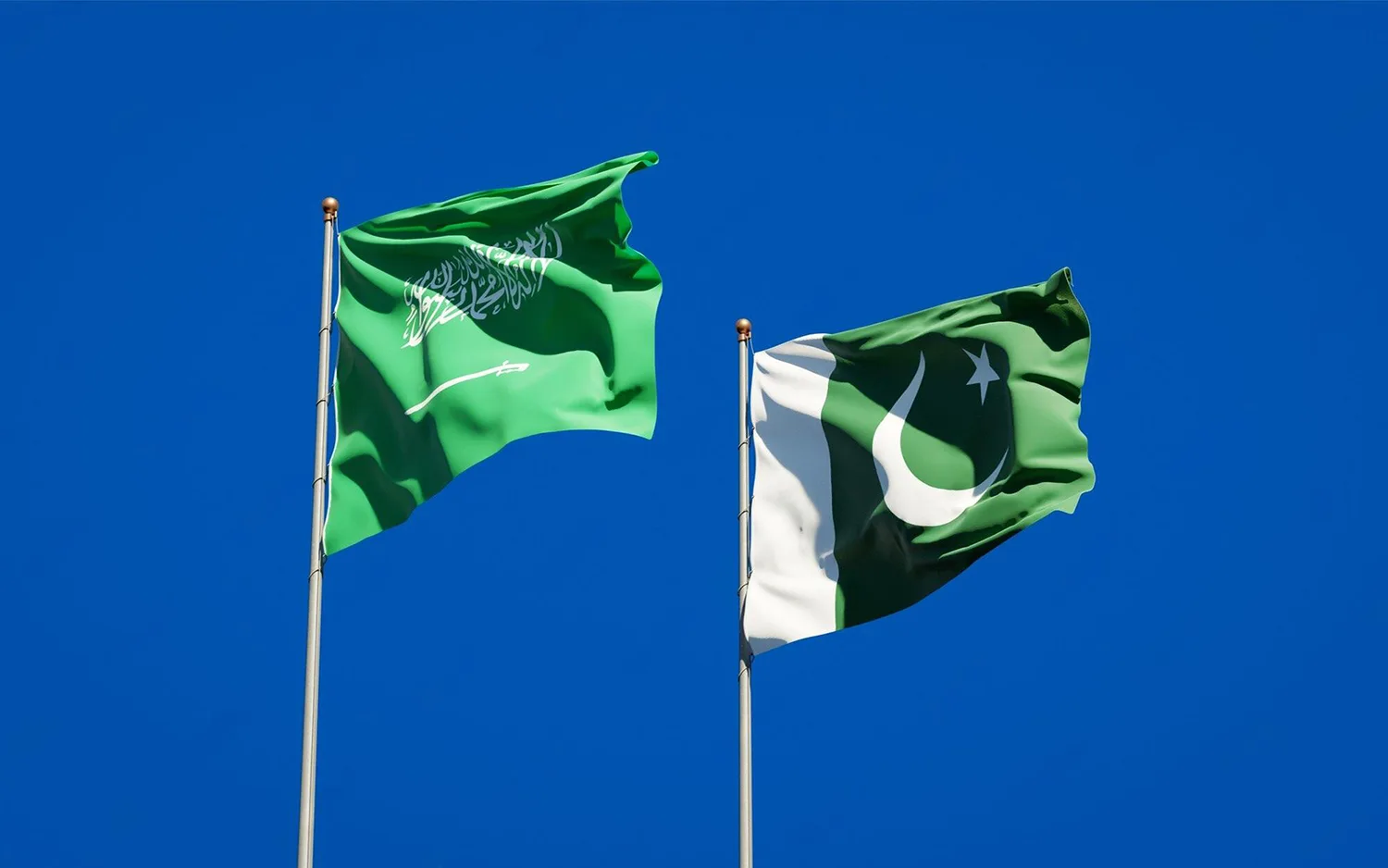
Dr. Eram Ashraf
Eram Ashraf holds a PhD in International Relations from Swansea University, UK, where she currently resides. Her doctoral research explored societal security, social identity, and the Uyghur millat/minzu.Her current work focuses on China-Pakistan relations, particularly the China-Pakistan Economic Corridor (CPEC) within the Belt and Road Initiative (BRI), with a special interest in the role of gender and regional dynamics.
The view in China on Pakistan and the Kingdom of Saudi Arabia’s Strategic Mutual Defense Agreement
On September 17, 2025, the Islamic Republic of Pakistan and the Kingdom of Saudi Arabia (KSA), released a joint statement announcing the formation of a Strategic Mutual Defense Agreement (SMDA). It followed a visit to the Kingdom by Pakistan’s prime minister Shahbaz Sharif, where he was given a royal welcome. While details of the agreement have not been provided, it clearly stated that “any aggression against either country shall be considered an aggression against both.” Their announcement came at the heels of an extraordinary joint session between the Arab League and the Organisation of Islamic Cooperation (OIC), where Israel’s air strikes on Qatar were condemned. However, both Pakistan and KSA denied their agreement was meant against any country, emphasizing it was something they had been working towards for a few years.
In China, where officially the government has yet to make a comment on the SMDA, the view is cautionary, given its details are scant. The Belt and Road Initiative (BRI), especially the China Pakistan Economic Corridor (CPEC), has resulted in China gaining prominence in South Asia’s politics. Their recent mediation role in Iran and KSA’s rapprochement, has also given China special significance in the Middle East. Hence how China views the security alliance between their ‘iron brother’ Pakistan and ‘comprehensive strategic partner’ KSA is important for all three countries and their regions.
Media analysis for this paper included China’s state and non-state news websites, to see how the agreement was being construed in its first few days. It does not claim to be comprehensive but provides a snapshot of what Chinese academics and journalists said about the agreement. While there were minor differences of opinion amongst them, none saw it as a problem for China in South Asia or in the Middle East.
One of the themes articulated by Chinese experts was that the SDMA represented change taking place in the Middle East and that the USA was no longer considered a reliable sole security provider. For example, the Director of the Center for South Asia Studies at the Shanghai Institutes for International Studies, Liu Zongyi, saw the SDMA as signaling KSA’s move to strengthen its own security and to show the USA that they have other options also. In his opinion, there were three events, which he believed, had led to the signing of the formal agreement. One was Pakistan’s recent victory in aerial battle against India with the help of China’s air defense system, which had given them international prestige. Second, Israel’s attack on Qatar had raised Saudi Arabia and other Arab countries’ concerns for their security. And third, he said were Pakistan’s concerns over growing close relations of Gulf countries with India.
Professor Sun Degang, Director of the Center for Middle Eastern Studies at Fudan University, explained that, prior to Hamas’s attack on Israel in October 2023, the USA had been trying to use the Abraham Accord, to bring Israel and the Arab countries together against Iran. However, following Israel’s response to Hamas’s attack, Arab countries had begun to see Israel as the problem in the region rather than Iran. His view was shared by Professor Jin Canrong from the China School of International Studies at Renmin University. Where in the past, he said, Arab states had collaborated with the USA and Israel against Iran, they were now viewing Israel as the main threat hence seeking security from sources other than the USA. Canrong, also believed the threat of military confrontation between Pakistan and Israel had increased with the pact. However, he did not mention it as a security problem for China despite China’s heavy investment in Pakistan under CPEC.
Pakistan and China have recently relaunched CPEC phase two after a delay of five years. Political upheaval in Pakistan, in the first decade of CPEC, resulted in China having to deal with three different governments in power, not including the interim governments. All China could do was send high officials repeating the same message to Pakistan’s political leaders asking for restoration of stability in Pakistan. An article by Zhou Rong, a Senior Fellow at Renmin University, helps explain how Pakistan’s relations with other states can cause concerns in China. In his essay, he addressed what he said were unfounded fears of Chinese citizens, who saw an improvement in Pakistan-USA ties as affecting Sino-Pakistan relations. A regular contributor in Pakistan’s first Chinese newspaper Huashang Weekly, he understood well both countries sensitivities having had lived in Pakistan.
Li Shijun, a scholar at the Shanghai based China-Arab Research Center on Reform and Development explained, the SDMA reflected KSA’s deepening of relations with Pakistan which now extended to the security realm. It could lead, he said, to further discussions amongst the Gulf States for the need for a collective defense arrangement. His view was shared by Zhu Yongbiao, the executive director of the Research Center for the Belt and Road at Lanzhou University. Pakistan, he explained, as an influential Muslim country in South Asia with “crucially” nuclear power and a “relatively balanced and mature foreign policy”, made a valuable ally for the KSA.
Chen Feng, a writer with the online news website Guancha.cn or “The Observer” saw the SDMA as an economic opportunity for China’s military hardware, another common theme found amongst many of the experts. With Pakistan heavily reliant on Chinese military hardware, he said, the KSA in the long run could purchase Chinese equipment to improve coordination and cooperation with Pakistan military. In the medium term, Pakistan could receive funds from the KSA as part of Pakistan stationing missiles and personal in the country under the pact. Those funds could then be used by Pakistan to purchase more fighter jets from China, such as the J-35A fighter. He envisioned the use of Pakistan to sell Chinese jets to Middle Eastern countries, as a win-win solution for both sides. Canrong, also believed the SDMA would benefit China given Pakistan relied heavily on Chinese military hardware. He explained, Pakistan’s agreement with the KSA, meant they would need more help from China to maintain their military presence. In turn, it would have a positive effect on China-Pakistan relations and could also help improve China’s relations with the Gulf countries.
Analysis of China’s state-owned and non-state online news media revealed some interesting commonalities and discrepancies in views. None of the experts expressed any concerns with the SDMA despite China’s heavy economic involvement in both Pakistan and the KSA. The potential cost to Chinese businesses and citizens inside the two countries, was not mentioned. For example, no fears were expressed towards Pakistan military over-stretching their abilities, in providing traditional and nuclear security umbrella to the KSA. This despite Pakistan was experiencing a rise in terrorist incidents with Chinese citizens also targeted and killed. Two-thirds of the experts also believed, the SDMA represented change, as the region looked to diversify their security needs. The United States was no longer considered a reliable sole security provider by countries such as the KSA. As such, many of the experts saw room for China’s military hardware industry to benefit, with Pakistan’s involvement.

Dr. Eram Ashraf
Eram Ashraf holds a PhD in International Relations from Swansea University, UK, where she currently resides. Her doctoral research explored societal security, social identity, and the Uyghur millat/minzu.Her current work focuses on China-Pakistan relations, particularly the China-Pakistan Economic Corridor (CPEC) within the Belt and Road Initiative (BRI), with a special interest in the role of gender and regional dynamics.


